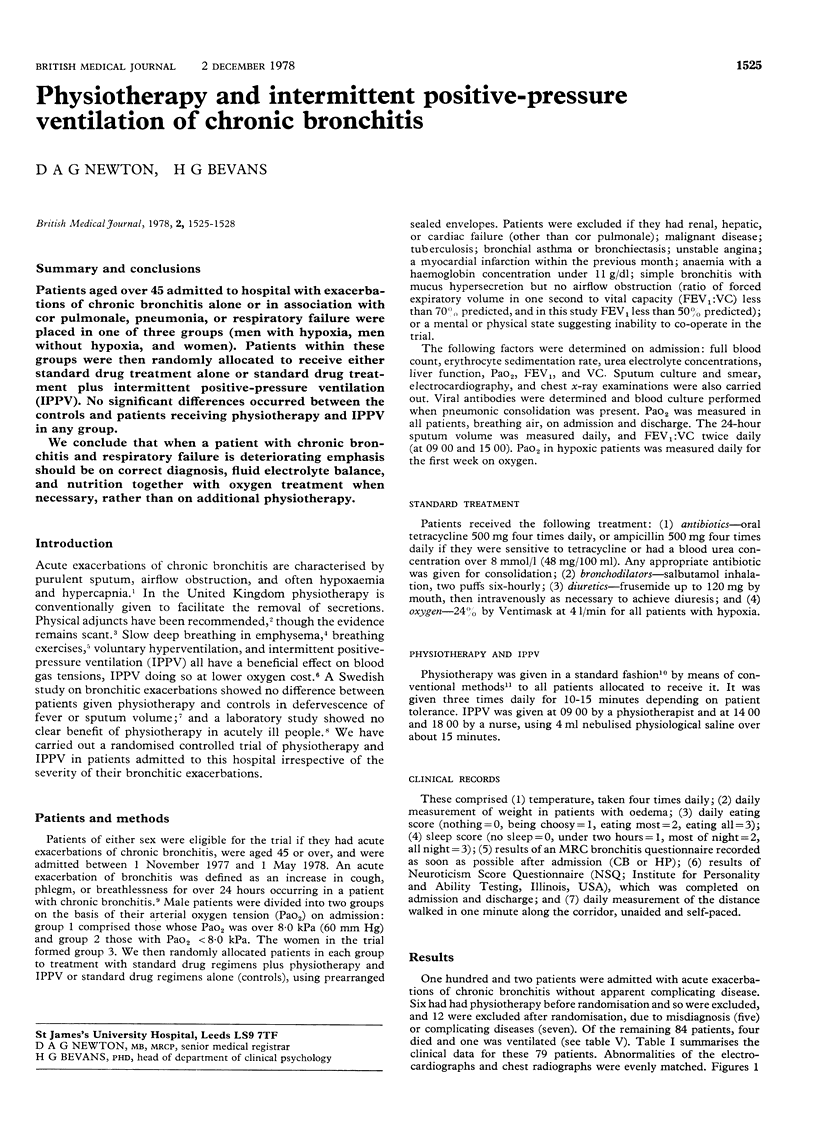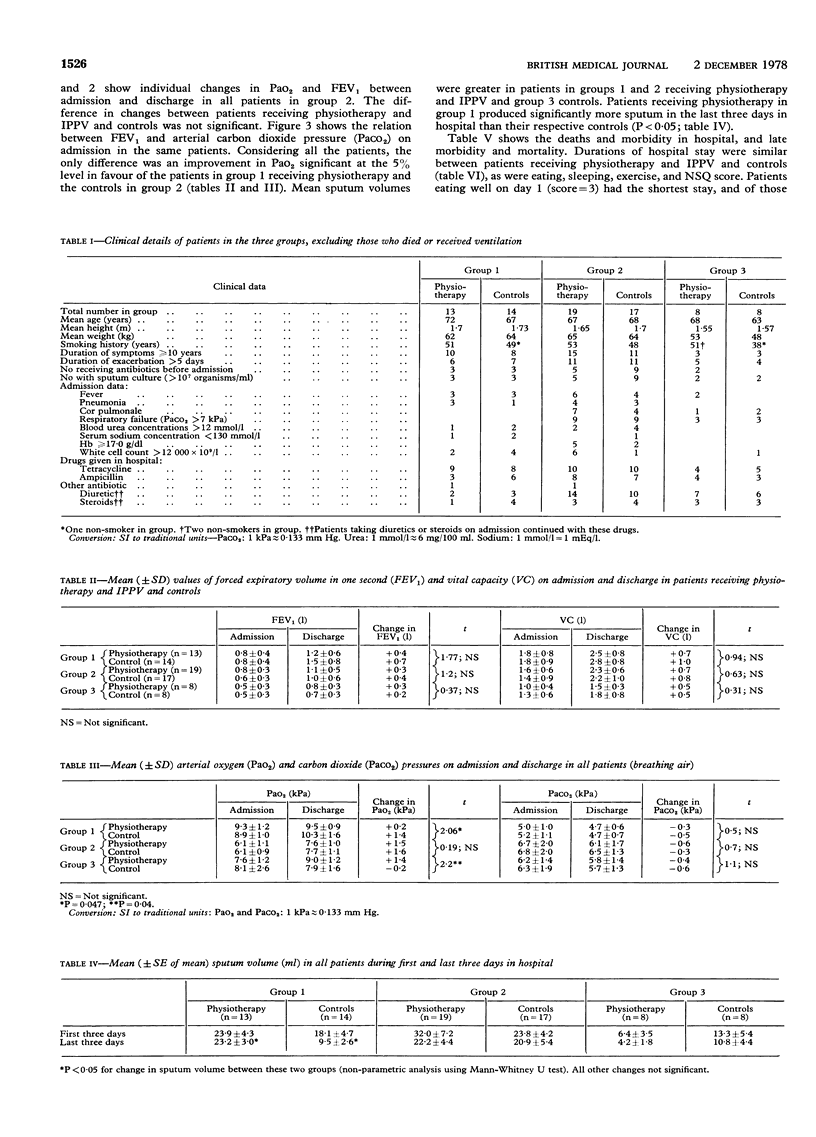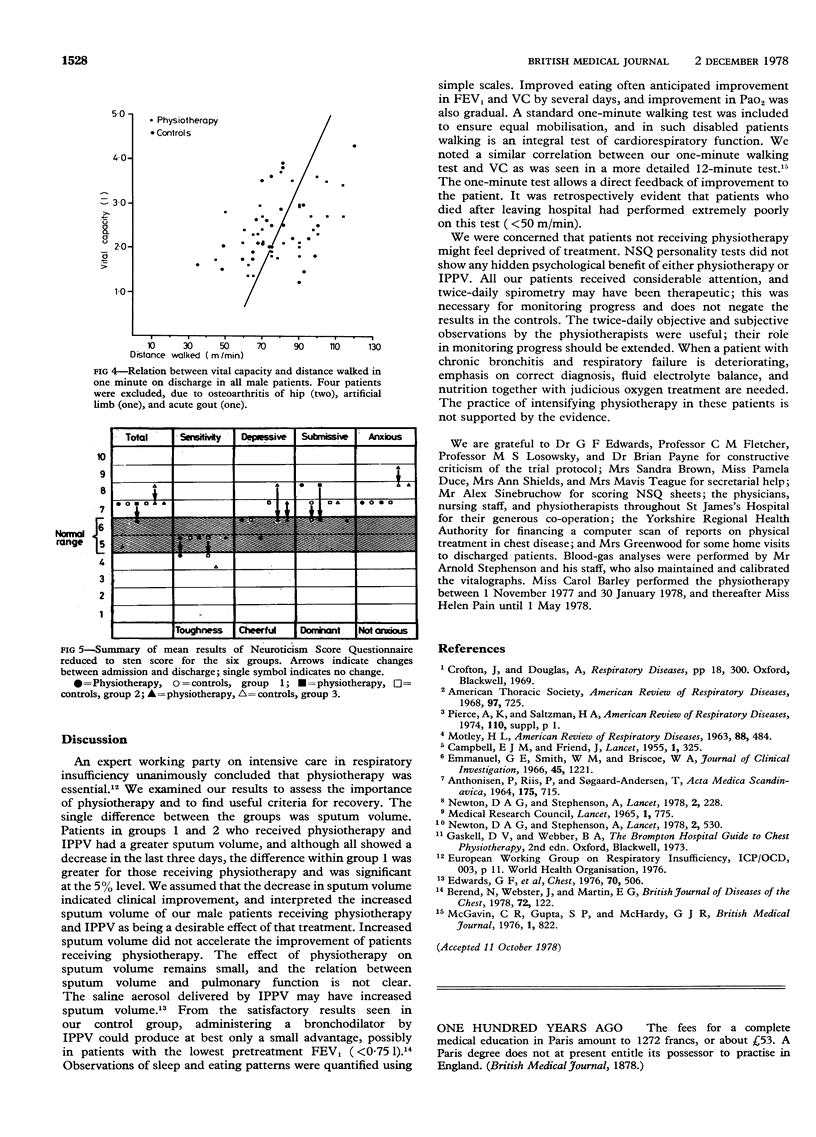Abstract
Patients aged over 45 admitted to hospital with exacerbations of chronic bronchitis alone or in association with cor pulmonale, pneumonia, or respiratory failure were placed in one of three groups (men with hypoxia, men without hypoxia, and women). Patients within these groups were then randomly allocated to receive either standard drug treatment alone or standard drug treatment plus intermittent positive-pressure ventilation (IPPV). No significant differences occurred between the controls and patients receiving physiotherapy and IPPV in any group. We conclude that when a patient with chronic bronchitis and respiratory failure is deteriorating emphasis should be on correct diagnosis, fluid electrolyte balance, and nutrition together with oxygen treatment when necessary, rather than on additional physiotherapy.
Full text
PDF



Selected References
These references are in PubMed. This may not be the complete list of references from this article.
- ANTHONISEN P., RIIS P., SOGAARD-ANDERSEN T. THE VALUE OF LUNG PHYSIOTHERAPY IN THE TREATMENT OF ACUTE EXACERBATIONS IN CHRONIC BRONCHITIS. Acta Med Scand. 1964 Jun;175:715–719. doi: 10.1111/j.0954-6820.1964.tb00627.x. [DOI] [PubMed] [Google Scholar]
- Berend N., Webster J., Marlin G. E. Salbutamol by pressure-packed aerosol and by intermittent positive pressure ventilation in chronic obstructive bronchitis. Br J Dis Chest. 1978 Apr;72(2):122–124. doi: 10.1016/0007-0971(78)90021-9. [DOI] [PubMed] [Google Scholar]
- CAMPBELL E. J., FRIEND J. Action of breathing exercises in pulmonary emphysema. Lancet. 1955 Feb 12;268(6859):325–329. doi: 10.1016/s0140-6736(55)90062-3. [DOI] [PubMed] [Google Scholar]
- Edwards G. F., Steel A. E., Scott J. K., Jordan J. W. S-carboxymethylcysteine in the fluidification of sputum and treatment of chronic airway obstruction. Chest. 1976 Oct;70(4):506–513. doi: 10.1378/chest.70.4.506. [DOI] [PubMed] [Google Scholar]
- Emmanuel G. E., Smith W. M., Briscoe W. A. The effect of intermittent positive pressure breathing and voluntary hyperventilation upon the distribution of ventilation and pulmonary blood flow to the lung in chronic obstructive lung disease. J Clin Invest. 1966 Jul;45(7):1221–1233. doi: 10.1172/JCI105428. [DOI] [PMC free article] [PubMed] [Google Scholar]
- MOTLEY H. L. THE EFFECTS OF SLOW DEEP BREATHING ON THE BLOOD GAS EXCHANGE IN EMPHYSEMA. Am Rev Respir Dis. 1963 Oct;88:484–492. doi: 10.1164/arrd.1963.88.4.484. [DOI] [PubMed] [Google Scholar]
- McGavin C. R., Gupta S. P., McHardy G. J. Twelve-minute walking test for assessing disability in chronic bronchitis. Br Med J. 1976 Apr 3;1(6013):822–823. doi: 10.1136/bmj.1.6013.822. [DOI] [PMC free article] [PubMed] [Google Scholar]
- Newton D. A., Stephenson A. Effect of physiotherapy on pulmonary function. A laboratory study. Lancet. 1978 Jul 29;2(8083):228–229. doi: 10.1016/s0140-6736(78)91742-7. [DOI] [PubMed] [Google Scholar]


